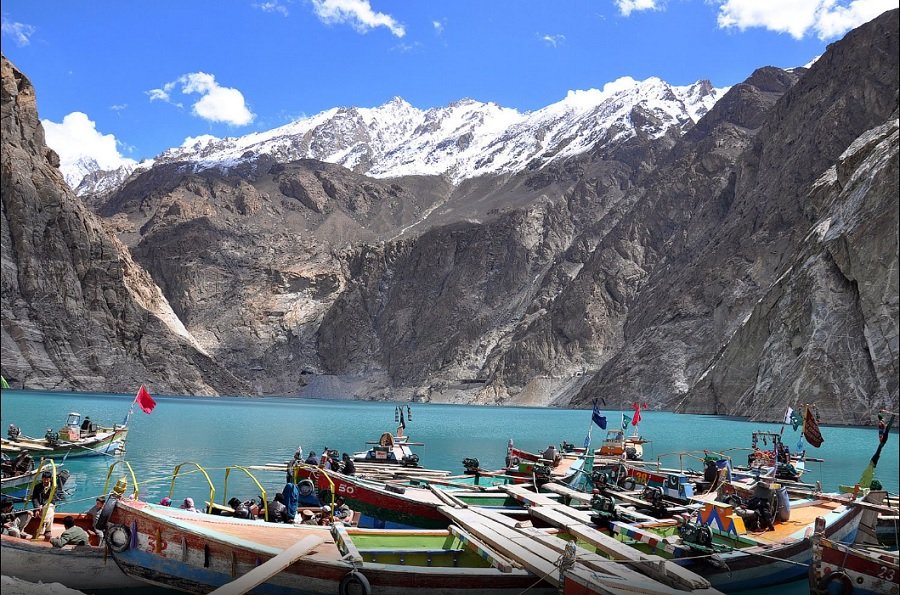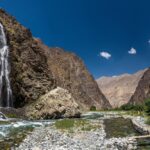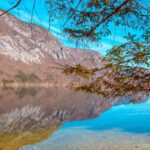Nestled in the lap of the mighty Himalayas, the Gilgit Hunza Valley is a paradise on Earth, captivating travelers with its breathtaking landscapes and the warm hospitality of its people. This remote region of Pakistan is a hidden gem, waiting to be explored. In this blog, we will dive deep into everything you need to know about the Gilgit Hunza Valley, from its mesmerizing beauty to the best time to visit and the fascinating local culture.
Where is Hunza Valley?
Before we delve into the details, let’s start with the basics. Gilgit Hunza Valley is located in the northernmost part of Pakistan, bordering China. Hunza Pakistan region is a part of the larger Gilgit-Baltistan area and is known for its rugged terrain, majestic peaks, and serene valleys.
Hunza Valley Weather and Temperature
The weather in Hunza Valley is as diverse as its landscapes. It experiences four distinct seasons, each with its own charm. Here’s a brief overview of the weather and temperatures in each season:
1. Spring (April to June): Spring is the perfect time to witness the valley’s lush greenery and blooming flowers. Temperatures range from 10°C to 20°C, making it pleasantly cool for outdoor activities.
2. Summer (July to September): This is the peak tourist season in Hunza Valley, with temperatures ranging from 20°C to 30°C. The weather is warm and sunny, ideal for trekking and sightseeing.
3. Autumn (October to November): Autumn brings a tapestry of colors as the foliage changes. The temperature ranges from 10°C to 20°C, making it another excellent time to visit.
4. Winter (December to March): Winter in Hunza Valley is a snowy wonderland, with temperatures dropping to -6°C. If you enjoy snow sports and serene landscapes, this is the time to visit.
Weather in Karimabad (Baltit)
Karimabad, often referred to as Baltit, is a picturesque town in Hunza Valley and serves as a central hub for travelers exploring the region. Let’s take a closer look at the weather in Karimabad:
· Spring: Karimabad experiences a similar spring climate to the broader Hunza Valley, with temperatures ranging from 10°C to 20°C. This is a great time to visit the historical Baltit Fort and immerse yourself in the local culture.
· Summer: During the summer months, Karimabad enjoys warm and sunny weather, with temperatures between 20°C and 30°C. This is the best time to explore the town, visit the centuries-old Baltit Fort, and take in panoramic views of the Karimabad Valley.
· Autumn: Just like the rest of Hunza Valley, Karimabad features a beautiful autumn with temperatures ranging from 10°C to 20°C. The serene ambiance of Karimabad and the surrounding landscapes make it a perfect place to unwind and take in the scenery.
· Winter: Winter in Karimabad is enchanting, with temperatures dropping to below freezing. The iconic Baltit Fort and the tranquil surroundings covered in snow offer a unique and peaceful experience. It’s a great time for those interested in historical and cultural exploration.
Best Time to Visit Hunza Valley
The best time to visit Gilgit Hunza Valley largely depends on your preferences. If you enjoy warm weather and outdoor activities, plan your trip during the summer months (July to September). However, if you prefer cooler temperatures and the beauty of changing seasons, spring (April to June) and autumn (October to November) are excellent choices. For those who love winter sports and snowy landscapes, a visit in winter (December to March) is a must.
Cultural Explorations in Hunza Valley
Hunza Valley is a haven for outdoor enthusiasts and cultural explorers. Here are some of the activities you can enjoy:
1. Trekking and Hiking: Explore the various trekking routes in Hunza, including the famous Baltoro Glacier trek and the stunning Rakaposhi Base Camp trek. The valley offers trails for all levels of trekkers, from beginners to experienced hikers.
2. Cultural Exploration: Visit historical sites like Baltit Fort, Altit Fort, and the ancient Silk Route to delve into the rich history and culture of the Hunza people.
3. Sightseeing: Admire the breathtaking landscapes, including Attabad Lake, Passu Cones, and the stunning Hunza Valley viewpoint.
4. Local Cuisine: Savor traditional Hunza dishes such as chapshuro (a meat-filled pastry) and apricot-based delicacies. The local cuisine is a delightful experience.
5. Photography: With its dramatic landscapes, vibrant apricot orchards, and ancient architecture, Hunza Valley is a paradise for photographers. Don’t forget to capture the sunrise and sunset views.
6. Camping: Set up camp in the serene valleys of Hunza and enjoy a night under the starry skies.
7. Shopping: Hunt for local handicrafts, gemstones, and traditional Hunza souvenirs in the local bazaars.
8. Interaction with Locals: Engage with the hospitable Hunza people and learn about their way of life, customs, and traditions.
9. Adventure Sports: Depending on the season, you can also enjoy adventure sports like rock climbing, paragliding, and snow sports in the winter months.
Culture and Traditions you will find in Hunza Valley
Popularity of Hunza
Hunza Valley has gained popularity for its stunning landscapes and outdoor activities, making it a sought-after destination for trekkers, photographers, and cultural enthusiasts.
Living Traditions of the Hunza Valley People
The people of Hunza Valley are known for their warmth, friendliness, and longevity. The Hunza people have a unique lifestyle and diet, which some believe contribute to their long and healthy lives. They are known for their hearty dishes like chapshuro (a meat-filled pastry) and their traditional clothing. When you visit, don’t forget to engage with the locals and learn about their fascinating culture.
· People: The people of Hunza are known for their warmth and hospitality. The Hunza people are primarily Ismaili Muslims and have their unique cultural practices.
· Language: The predominant language spoken in Hunza is Burushaski, but many residents also speak English, Urdu, and other regional languages.
· Population: Hunza Valley has a relatively small population, with towns like Karimabad and Aliabad being the main centers. The exact population may vary but is estimated to be around 70,000.
· Religion: The majority of people in Hunza Valley follow the Ismaili branch of Islam. The Aga Khan is the spiritual leader of the Ismaili community, and his guidance plays a significant role in the lives of the local people. There are also small minority communities of other religious groups.
Enchanting Highland Lakes: A Glimpse of Serenity in Hunza, Pakistan
1.Attabad Lake:
Attabad Lake is a stunning turquoise lake formed as a result of a landslide in 2010. It’s surrounded by towering mountains and offers boat rides with breathtaking views.
Taking about Attabad lake weather, it is similar to the general Hunza Valley weather patterns. During the summer, the area around the lake is ideal for boating and picnics. In contrast, winter transforms it into a serene, icy paradise, perfect for photography and peaceful moments by the frozen lake.
2.Borith Lake:
Borith Lake is a high-altitude lake in the Gojal Valley, known for its serene ambiance and reflection of the surrounding mountains. It’s a great place for birdwatching.
3.Passu Cones and Lake:
The Passu Cones are a series of stunning, jagged peaks. Nearby, you’ll find a serene glacial lake offering picturesque views of the Cones and the surrounding landscape.
4.Rush Lake:
Rush Lake is one of the highest alpine lakes in Pakistan and offers trekkers a challenging yet rewarding journey. The lake sits at an altitude of around 4,694 meters.
How Can You Reach Hunza Valley From
Lahore
Start your journey by taking a domestic flight from Allama Iqbal International Airport in Lahore to Islamabad International Airport.
From Islamabad, you have the option to either take another domestic flight to Gilgit or drive to Gilgit, which is a scenic route that takes approximately 18-20 hours.
Once in Gilgit, continue your journey by road to Hunza Valley, which is approximately a 2-3 hour drive, depending on your specific destination in Hunza.
Islamabad
If you’re starting from Islamabad, you have the option of either taking a domestic flight to Gilgit or traveling by road. The flight will take you directly to Gilgit, whereas the road journey offers picturesque views but takes around 18-20 hours.
From Gilgit, continue your journey by road to reach different areas of Hunza Valley.
Skardu
If you’re in Skardu, another breathtaking region in Gilgit-Baltistan, you can reach Hunza Valley by taking a road trip. The drive from Skardu to Hunza takes around 4-5 hours, and it offers stunning views of the Karakoram Range along the way.
Gilgit
If you arrive in Gilgit by flight or road, you can easily access different areas within Hunza Valley. The journey from Gilgit to Karimabad (the main town in Hunza) takes around 2-3 hours by road.
What kind of hotels you can choose to live in Hunza Valley?
1.Serena Hotel Hunza:
A luxurious hotel with modern amenities, Serena Hotel offers breathtaking views of the valley and is known for its comfort and hospitality.
2.Eagle’s Nest Hotel:
Perched on a hilltop, this hotel provides panoramic views of Hunza Valley. It’s a popular choice for travelers seeking stunning scenery.
3.Hunza Embassy Hotel:
Offering a comfortable stay and traditional Hunza cuisine, this hotel provides a cultural experience for guests.







